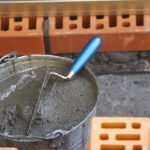Finishing the interior of a residential apartment contains the stage of plastering the wall. A properly created surface resists moisture, temperature, ultraviolet radiation, mechanical stress, chemicals and other factors that arise inside the home. Therefore, the masters are forced to defend the expensive plaster cladding with special compounds applied to the wall of the decorated room.
What is decorative wax
Among the popular materials for creating a protective layer, various wax coatings are found. These compounds form a durable film that slows down the destruction of plaster under the influence of the external environment, increasing the adhesion force of the material, making the surface shine. The main components of such substances are represented by ingredients of both natural and synthetic origin.
If the colorless decorative wax is diluted with pigment, a shade compatible with the interior palette arises.
The correct formation of layers that occurs when applying all sorts of varieties of wax is corrected using an alcohol solvent. This substance fulfills its purpose regardless of the presence in the protective composition of water, essential oils and other main ingredients. The glossy gloss surface protected by liquid wax confidently resists the dangers of adverse microclimate.
Porous plaster is coated with a gel-like composition.How to apply wax to plaster
The last stage of wall plastering is represented by the formation of a protective layer. Before starting work, the discovered defects are carefully corrected and final changes are made, since missed errors cannot be fixed after the appearance of the finish coating. The technology for protecting the stucco mixture with wax makes the wall dry, as well as dispose of construction waste and the remnants of finishing materials.
When cleaning operations are ignored, microscopic dust particles adhere to the hardening wax coating, spoiling the attractiveness of the finished wall. Then, devices are prepared, among which there is an ordinary spatula made of metal or rubber, a soft flannel fabric or a wool mitten. The first tool is equipped with a small amount of wax rubbed into the plastered wall until gloss and reflectivity appear on the surface.
Wax is processed first lower, and then the upper area of the wall in the direction from the corners of the room.
Quick-setting material is applied non-stop, so the initial stages of the operations make the wizard calculate the amount of material consumed. Excess layers are removed with a cloth previously soaked in a solvent to maintain the attractiveness of the protective coating. The appearance of darkened areas is prevented by rubbing the wax, which occurs with a slight pressure of the tool.

-
 For what devices people did not conduct wiring, and then very much regretted
For what devices people did not conduct wiring, and then very much regretted
-
 Where you should not put a washing machine in the bathroom
Where you should not put a washing machine in the bathroom
-
 Why was ash added to the mortar in masonry before
Why was ash added to the mortar in masonry before
-
 Smart sockets: why call a coffee maker or kettle
Smart sockets: why call a coffee maker or kettle
-
 Frequent and dangerous mistakes for working with a grinder for beginners
Frequent and dangerous mistakes for working with a grinder for beginners
-
 What types of screws are best not to use
What types of screws are best not to use
-
 What can happen if you do not have grounding in the apartment
What can happen if you do not have grounding in the apartment
-
 New bill: how much do you have to pay for electricity
New bill: how much do you have to pay for electricity
-
 The weaknesses of cheap food: how to extend the life
The weaknesses of cheap food: how to extend the life
-
 Is it possible to restore a damaged foundation
Is it possible to restore a damaged foundation
-
 Is it profitable to turn off the power supply and switch to your
Is it profitable to turn off the power supply and switch to your
-
 What you will face if you combine a balcony with a room
What you will face if you combine a balcony with a room
New publications are published daily on our channel in Yandex. Zen
Go to Yandex. Zen





